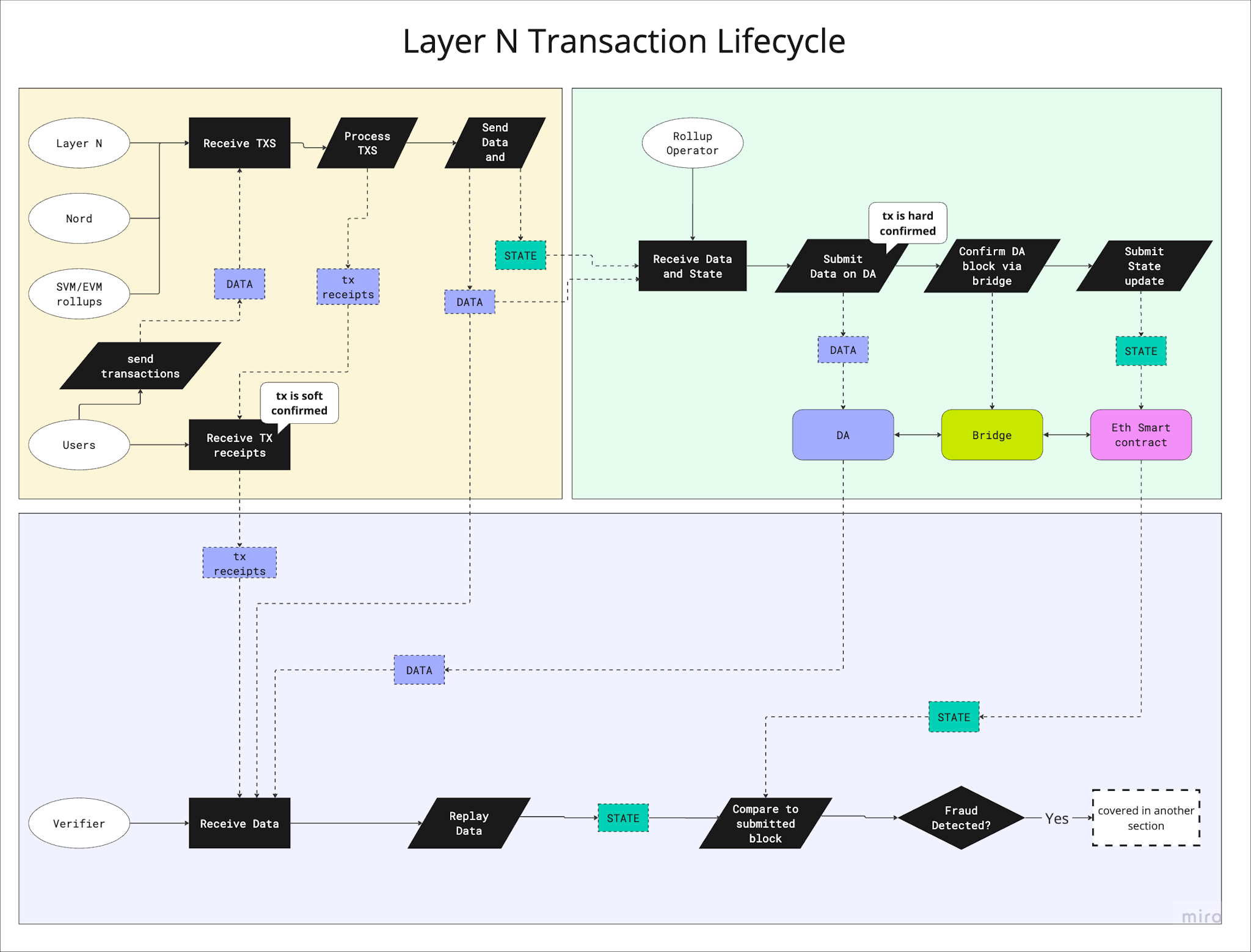Transaction Lifecycle
At a high level, Layer N is a network that accepts transactions directly from users, orders them, executes them, then batches, compresses and settles them back to Ethereum.
This design allows Layer N to optimize its execution environment and to provide significant scaling benefits, all while being secured by Ethereum.
Here we walk through the typical journey of a transaction submitted to Layer N.

Transaction received and ordered
Transactions that hit the Layer N network are first ordered by first-in-first-out.
Transaction processed and soft-confirmed
Ordered transactions are executed in the VM. Once executed, a transaction receipt is returned to the client. This receipt represents a soft-confirmation as it is a signed signature that can later be used to submit a fraud proof in case the transaction is not correctly included. In most cases, this can be counted as a safe confirmation.
Transaction data posted to the Data Availability layer
The data from processed transactions are streamed to Data Availability layers so that they can be made available for verifiers to submit fraud proofs. When a transaction is posted to the DA layer, it is considered hard-confirmed.
State settled to Ethereum
Once the transaction data for a block is successfully posted to the DA layer, a state update block is posted to Ethereum to finalize the state.
Verifier listens and replays data
Verifier subscribes to the validator and DA layer for transaction data, and replays it to resimulate the state updates
Verifier compares state blocks
Verifier compares its own simulated state to the one on-chain to ensure that they match. If they don’t match, then the verifier submits a fraud proof.